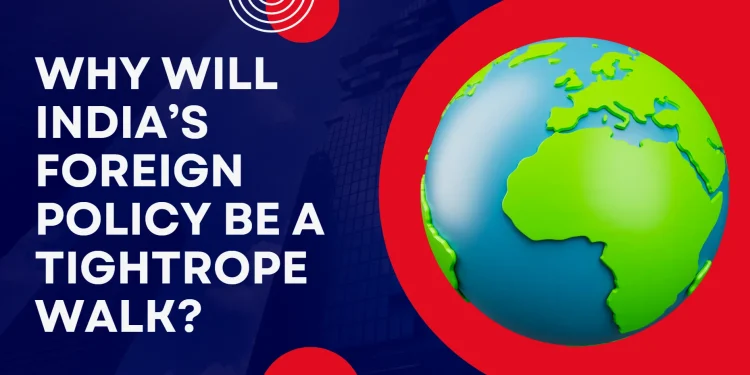India’s foreign policy in 2025 reflects its growing stature as a regional powerhouse and an emerging global influencer. With shifting geopolitical alignments, new economic partnerships, and rising global challenges, India’s diplomatic approach has become more assertive, strategic, and diversified than ever before.
🇮🇳 Key Principles Driving India’s Foreign Policy
- Strategic Autonomy: India maintains independence in decision-making, avoiding alignment with any one global bloc.
- Neighborhood First: Continued focus on strengthening ties with SAARC and BIMSTEC nations.
- Act East Policy 2.0: Enhanced engagement with ASEAN and East Asian countries.
- Vishwa Bandhutva: Promoting peace, development, and multilateral cooperation rooted in civilizational values.
🌍 Major Developments in 2025
1. Strengthening Ties with the Global South
India is leading initiatives for climate justice, tech access, and fair trade for the Global South. Its G20 presidency legacy and Voice of Global South Summit have positioned India as a bridge between developed and developing nations.
2. China Relations: A Delicate Balance
Despite border tensions (especially in Arunachal Pradesh and Ladakh), India continues trade and multilateral engagements with China. However, strategic defense ties with Quad partners (US, Japan, Australia) are a strong counterbalance.
3. US-India Strategic Partnership
2025 has seen deeper cooperation in:
- Defence (JET engines, drone tech)
- Cybersecurity & AI
- Clean energy
India’s position as a reliable democratic partner has been reaffirmed across administrations in Washington.
4. Russia Relations Amid War Fatigue
India continues to balance ties with Russia amid global criticism of the Ukraine conflict. Energy imports remain strong, and rupee-ruble trade is being explored more actively.
5. Middle East Diplomacy
India is a key part of the India-Middle East-Europe Economic Corridor (IMEC), strengthening trade with UAE, Saudi Arabia, and Israel. Relations with Iran are being revived, especially around Chabahar Port and regional security.
🛡️ Defense and Security Diplomacy
- QUAD (India, US, Japan, Australia): Focus on Indo-Pacific security, maritime cooperation, and semiconductors.
- BRICS Expansion: India supports a cautious expansion, ensuring its influence remains intact in the grouping.
- UN Reforms Advocacy: India continues pushing for a permanent UNSC seat, garnering support from Africa and Latin America.
💼 Trade and Economic Diplomacy
- FTA with EU is in final stages, expected to boost exports in textiles, pharma, and green tech.
- RuPay and UPI Globalization: India is pushing its fintech solutions in Southeast Asia, Africa, and Middle East.
- Supply Chain Resilience: India is replacing China in many sectors for Western businesses via the PLI (Production Linked Incentive) schemes.
🌱 Climate and Tech Leadership
- India continues to lead global south negotiations on climate finance and green tech.
- Strategic partnership with EU and UK on carbon credit markets, solar tech, and electric vehicles.
- India is also investing in AI ethics, digital governance, and data sovereignty diplomacy through platforms like G20 and the Global Digital Compact.
📌 Challenges Ahead
| Challenge | Impact |
|---|---|
| Border disputes with China & Pakistan | Military tensions, regional instability |
| Global recession fears | Export challenges, dollar volatility |
| Balancing Russia-US ties | Diplomatic tightrope |
| Climate pressure | Push for faster green transitions without hurting domestic growth |
🧭 Conclusion
India’s foreign policy in 2025 is marked by confidence, pragmatism, and long-term vision. As it balances old alliances with new priorities, India is asserting itself as a global rule-shaper rather than a rule-taker. With a clear focus on security, development, and strategic autonomy, India is well on its way to becoming a leading voice in global diplomacy.































































